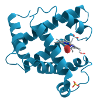Overview
In the last two decades, many computer scientists in Artificial Intelligence have made significant contributions to modeling biological systems as a means of understanding the molecular basis of mechanisms in the healthy and diseased cell. The field of computational biology includes the development and application of data-analytical and theoretical methods, mathematical modeling and computational simulation techniques to the study of biological, behavioral, and social systems. The focus of this workshop is the use of nature-inspired approaches to central problems in computational biology, including optimization methods under the umbrella of evolutionary computation
One of the main objectives of the workshop is focused on computational structural biology. Great progress is being made by these researchers on novel and powerful algorithms to solve exceptionally challenging computational structural biology problems at the heart of molecular biology, such as structure prediction, analysis, and design of biological macromolecules (proteins, RNA). These problems pose difficult search and optimization tasks on modular systems with vast, high-dimensional, continuous search spaces often underlined by non-linear multimodal energy surfaces.
A particular emphasis will be on progress in the application of evolutionary computation to problems related to any aspects of protein structure modeling, characterization, and analysis. The workshop will allow for a broader focus on all structure-related problems that necessitate the design of novel evolutionary computation approaches. These may include broader structure modeling settings beyond de novo structure prediction, such as mapping of protein and peptide energy landscapes, structure analysis, design, docking, and other emerging problems in computational structural biology. Although computational structural biology is one on the main areas, other work in sequence and systems computational biology that prompts the design of novel evolutionary computation approaches is welcome.
Following the previous editions in GECCO 2016 and GECCO 2015, those focused on computational structural biology, one of the objectives of this workshop is to aid evolutionary computation researchers to disseminate recent findings and progress. The workshop will provide a meeting point for authors and attendants of the GECCO conference who have a current or developing interest in computational biology. We believe the workshop will additionally attract computational biology researchers that will further add to the attendance and GECCO community and possibly spur novel collaborations. We hope this workshop will stimulate the free exchange and discussion of novel ideas and results, with the aim of bridging computational biology and evolutionary computation.
Areas of interest include (but are not restricted to):
• Genome and sequence analysis with nature-inspired approaches.
• Computational systems biology.
• Biological network modeling and analysis.
• Use of artificial life models like cellular automata or Lindenmayer systems in the modeling of biological problems.
• Study and analysis of properties of biological systems like self-organization, self-assembled systems, emergent behavior or morphogenesis.
• Hybrid approaches and memetic algorithms in the modeling of computational biology problems.
• Multi-objective approaches in the modeling of computational biology problems.
• Use of natural and evolutionary computation algorithms in protein structure classification and prediction (secondary and tertiary).
• Mapping of protein and peptide energy landscapes.
• Modeling of temporal folding of proteins.
• Protein design.
• Protein-ligand and protein-protein docking.
• Stability and dynamics of biomolecular systems.
• Applications in atomic clusters: Water clusters, Leonard Jones clusters, metal clusters, etc.
• Applications in cellular systems: micelle, single organisms, bacterial cells, etc.
• Applications in stem cell differentiation and development, lineage programming and cell fates.
• Evolutionary search strategies to assist cryo-electron microscopy and other experimental techniques in model building.
• Surrogate models and stochastic approximations of computationally expensive fitness functions of biomolecular systems.


